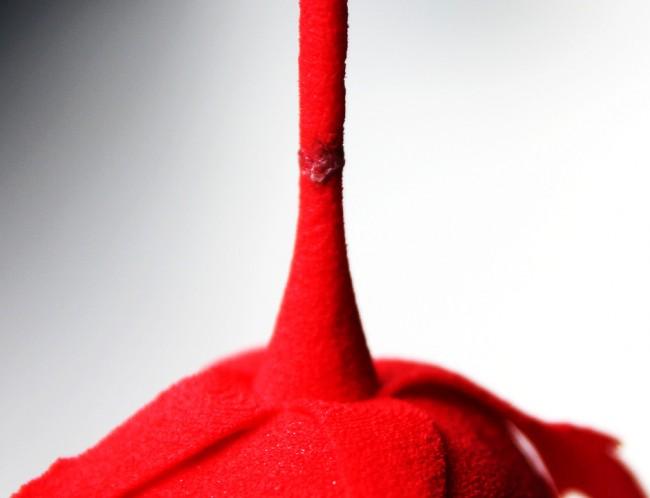
When it is applied to dyed polyamide, cyanoacrylate may leave a mark and may darken the color of the object
Unless you’re 3D printing small, generally uncomplicated objects, you have very likely found yourself in the position of printing something you designed in parts or pieces and then trying to figure out the best way to connect them. If you haven’t designed objects with clever, interlocking parts or allowed for assembly using hardware or other methods, you’ll likely find Sculpteo’s advice on gluing 3D printed material pretty helpful.
Sculpteo, a web-based 3D printing service based in Villejuif, France, a suburb of Paris, and San Francisco, California, gets almost daily inquiries from the online 3D design and printing community concerning the best methods for gluing and the ideal glues for different materials. Sculpteo materials engineer Pierre Leite decided that rather than responding to the many inquiries on a one-to-one basis, he could provide the growing global 3D printing community with a guide to gluing.
Before beginning with the actual gluing, advises Leite, get to know the material with which you’re printing so that you can ensure it is compatible with the glue. Your 3D printing material should come with packaging that identifies the components of the material, what it’s made of, and any warnings about toxicity, including compatibility issues. You can also find material datasheets on Sculpteo’s website.
Leite focused his how-to guide on three different kinds of glue:
His first and critical piece of advice was this: “Make sure to properly ventilate your workroom because of the solvents contained in glues.” Do not proceed with gluing until you’ve ensured that you have the proper ventilation.
As for the three glues themselves, the first, cyanoacrylate, is basically super glue. If you are 3D printing in multicolor material, only use this type of glue with a material that is already comprised of cyanoacrylate. It can also be used with undyed plastics. If the plastic has been dyed, however, the glue will degrade the dye. One of the great things about cyanoacrylate is that it is easy to find in stores and online and is super cheap. It also dries very quickly, although when gluing parts together with it, hold them together for a few minutes to ensure that the glue hardens and bonds the material. After that, you’ll need to wait a few hours until the process of polymerization (the chemical reaction wherein polymer chains are created and bonding takes place) is finished. Cyanoacrylate is also resistant to freezing temperatures and to chemical products.
Epoxy, on the other hand, is, writes Leite, “a two-component adhesive that needs to be mixed prior to use.” It is a popular solution for many 3D printers as it can be used with any material, including plastics that have been dyed. Epoxy is highly viscous and takes much longer to dry than does cyanoacrylate. You’ll find that you must hold the pieces together by hand or clamps or other means while the epoxy dries. That’s not necessarily a bad thing, though, in the sense that you can still manipulate the pieces after gluing them, which is certainly a plus where precision is concerned. However, it has a good chemical and temperature resistance. With epoxy, it can take hours–potentially a full day–for polymerization to be fully completed.
Last but not least, there’s neoprene glue, which is used with less frequency than the previous two glues. The advantage of neoprene glue is that it works well with most any kind of material. However, it is neither colorless nor does it dry especially quickly.
One last bit of advice before you begin researching the best glue for a given 3D printing job: Remember always to prep the pieces you intend to glue so that they will adhere properly. That means surfaces should be smooth and clean, so sand and wipe down well as the material you print with requires before setting up your workspace for a gluing project. Let’s hear your tips on gluing 3D printed pieces together in our forum thread here.
Subscribe to Our Email Newsletter
Stay up-to-date on all the latest news from the 3D printing industry and receive information and offers from third party vendors.
You May Also Like
3D Printed Heat Spreader Could Improve Efficiency of Electronics
The low-hanging fruit for decarbonization has long been improving the efficiency of existing systems, hence the justification for LED lights and ENERGY STAR certified appliances. While such minor moves are...
3D Printing News Unpeeled: Marine Gearboxes, 3D Printed Motors and $1.7 Million in Seed Funding
UK based Equipmake just released their Ampere-220 e-axle system. The system, which is meant for high performance electric cars, was similar to one released on the Ariel HIPERCAR. It has...
CEAD Unveils 36-Meter-Long 3D Printer for Abu Dhabi’s Al Seer Marine
CEAD, a Dutch original equipment manufacturer dedicated to large-format 3D printers, has unveiled what it claims to be the world’s largest robotic arm-based 3D printer. At 36 meters long and...
3D Printed Biocomposites Could Help Reduce Marine Plastic Pollution
Concerns about the impact of plastic litter and microplastics in the oceans are at the forefront of environmental study. For decades, the marine environment has suffered from the degradation of...






































